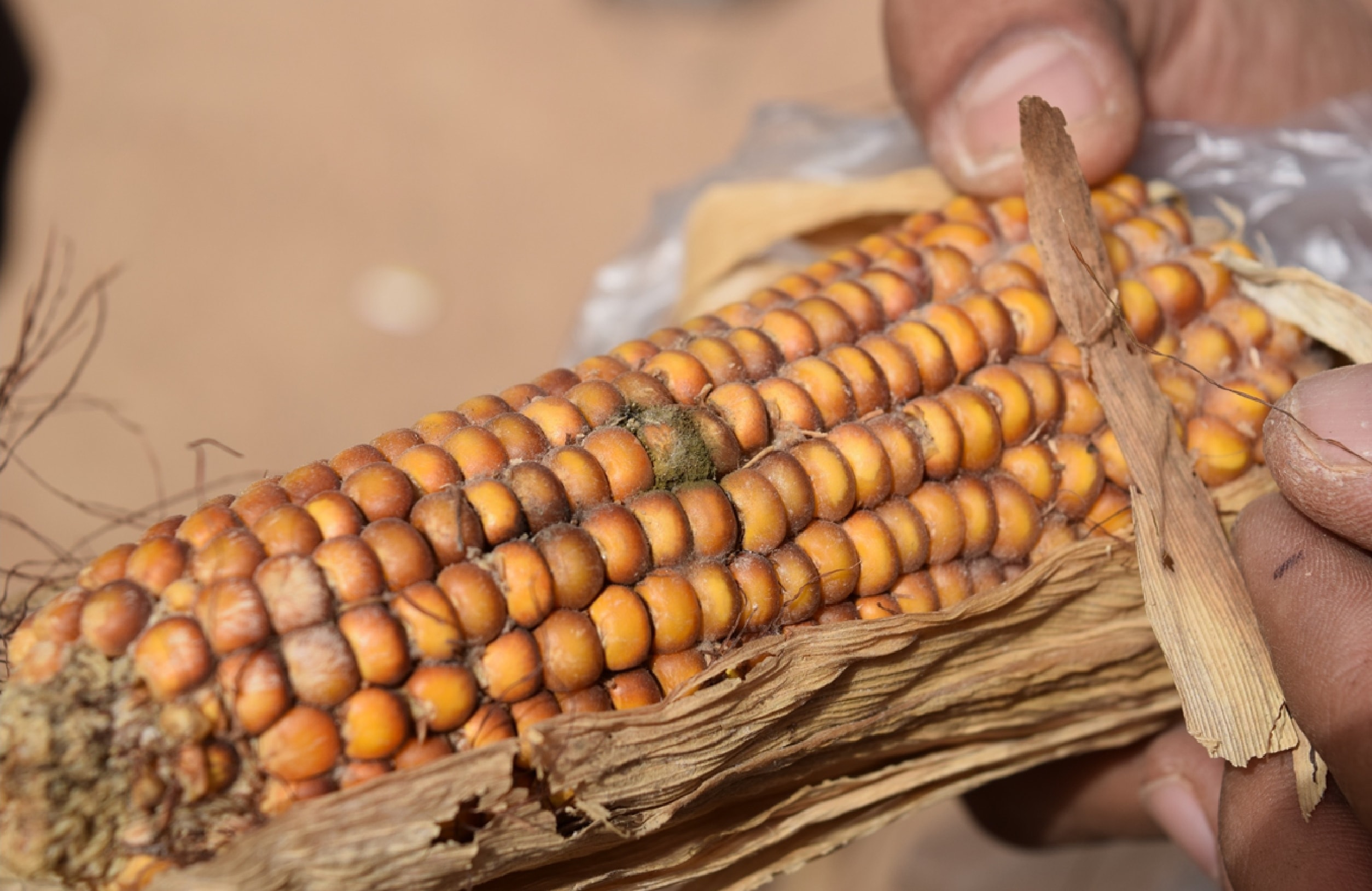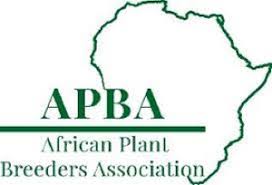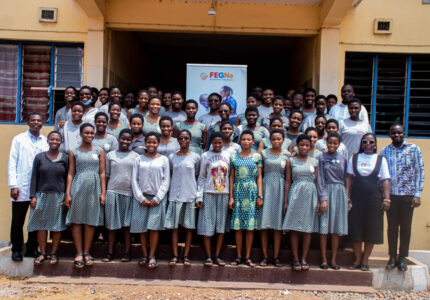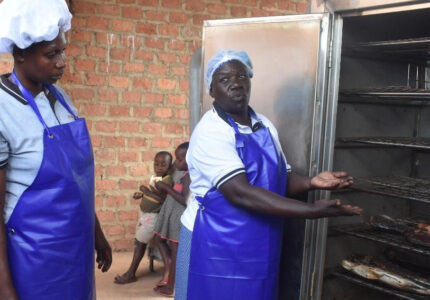A study has identified the best non-toxic strains that can limit aflatoxin contamination in laboratory and field conditions. One of the authors, Dr. Alejandro Ortega-Beltran, a plant pathologist with the International Institute of Tropical Agriculture (IITA) says, “We were able to detect non-toxic strains with the highest ability to limit crop contamination in the laboratory and the highest efficiency to prevent aflatoxin producers from reaching treated crops.”
The study, which was recently published (August 2019) in the Frontiers in Microbiology Journal has great public health implications for Ghanaian maize and groundnut farmers and consumers. As Ortega-Beltran adds, “We selected the eight most efficient strains to compose two Aflasafe products. These products are now registered with authorities in Ghana. Farmers can now apply Aflasafe in their fields which will enable them to produce maize and groundnuts that have low aflatoxin content. These safe crops can enter domestic and international premium markets.”
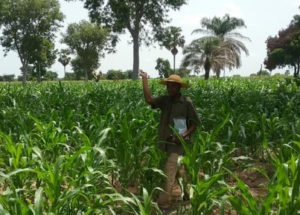
Farmers can now apply Aflasafe in their fields
which will enable them to produce maize and
groundnuts that have low aflatoxin content
Aflatoxin is a major cause of ill health and lost trade opportunities in many African countries, including Ghana where solutions have been sought for decades. Consuming aflatoxin-contaminated food causes stunting in children and increases the risk of liver cancer in adults. In Ghana, maize and groundnut are the crops with the highest aflatoxin levels. Government authorities have set the acceptable limit of aflatoxin at 15 parts per billion (ppb) for maize and 10 ppb for groundnut. However, levels over 50 ppb are a common occurrence.
Although aflatoxin can be controlled in farmers’ fields, Ghana has been focusing on postharvest interventions. This has not been effective in reducing aflatoxin levels in food because crop infection and contamination often begin in the field. Once crops are contaminated, aflatoxins cannot be completely removed.
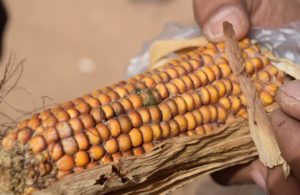
Maize contaminated by aflatoxin. When
consumed, aflatoxin increases the risk of one
developing liver cancer
Since 2013, the use of non-toxic and natural biocontrol agents has been sought as an alternative for aflatoxin control in Ghana. A group of researchers from the International Institute of Tropical Agriculture (IITA) and other agricultural institutes, led by Ranajit
Bandyopadhyay, an IITA Principal Scientist (Plant Pathologist), carried out a study to detect the best non-toxic biocontrol agents for aflatoxin management in Ghana. The study showed that substantial displacement of aflatoxin producers from soils and crops occurred in treated plots across the three agroecological zones where these strains were tested. The displacement was observed also in neighboring non-treated crops. Eight of the most superior strains were selected as active ingredients of two biocontrol products, each one containing four atoxigenic strains. This means that soon, Ghana will have two aflatoxin biocontrol products named Aflasafe GH01 and Aflasafe GH02.
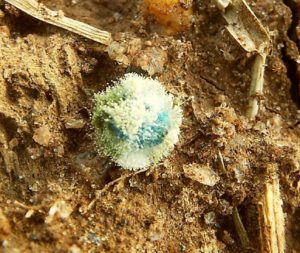
Aflasafe in the field. Aflasafe is IITA’s product
which prevents aflatoxin-producing fungi from
multiplying and contaminating crops
Both of these Aflasafe products are a practical, efficient, and cost-effective tool to reduce aflatoxin contamination thus reducing aflatoxin-related diseases and increasing access to local and international premium markets seeking aflatoxin-compliant crops.
The research revealed that several atoxigenic Aspergillus flavus (A. flavus) isolates are associated with both maize and groundnut grown across diverse agroecological zones in Ghana. However, the potential of atoxigenic isolates native to Ghana to competitively displace aflatoxin producers and limit aflatoxin content in the field has not been investigated. The 2019 study examined the ability of 12 non-toxin producers to move from the soil to crops and limit aflatoxin contamination. The 12 isolates were chosen for testing if they were similar to the non-toxic biocontrol active ingredients already in use in other West African countries, and also if they were able to limit aflatoxin contamination in laboratory conditions.
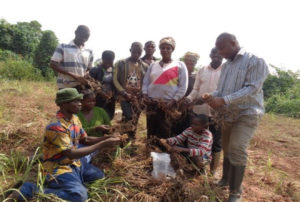
Aflatoxins are produced by several fungi belonging to Aspergillus section Flavi which grow in soil and decaying vegetation and ultimately infect crop grains. However, the most common aflatoxin-producing species worldwide is Aspergillus flavus (A. flavus).
Atoxigenic biocontrol is already in use in Burkina Faso, the Gambia, Italy, Kenya, Nigeria, Senegal, Tanzania, and the US.
Source: iita.org

